 Coffee prices have been soaring in recent months. This applies to the prices of both coffee beans on international markets, coffee in supermarkets and coffee in coffee shops. In this blog we examine the causes and what is likely to happen over the coming months.
Coffee prices have been soaring in recent months. This applies to the prices of both coffee beans on international markets, coffee in supermarkets and coffee in coffee shops. In this blog we examine the causes and what is likely to happen over the coming months.
As we shall see, demand and supply analysis provides a powerful explanation of what has been happening in the various sectors of the industry and the likely future path of prices.
The coffee industry
The cultivating, processing and retailing of coffee is big business. It is the second most widely traded commodity after oil and around 2.5 billion cups are consumed worldwide on a daily basis. In the UK nearly 100 million cups of coffee a day are drunk, with coffee consumers spending around £4 billion per year on sit-down and takeaway coffees and on coffee bought in supermarkets and other shops for making at home. The average takeaway coffee costs around £3.40 per cup with speciality coffees costing more.
Global production in the coffee year 2023/24 was 178 million 60 kg bags (10.7 million tonnes) and the annual income of the whole sector exceeds $200 billion. Around 25 million farmers spread across 50 countries harvest coffee. The majority of these farms are small and family run. Some 100 million families worldwide depend on coffee for their living.
Brazil is by far the biggest producer and accounts for nearly 40% of the market. A good or poor harvest in Brazil can have a significant impact on prices. Vietnam and Columbia are the second and third biggest producers respectively and, with Brazil, account for over 60% of global production.
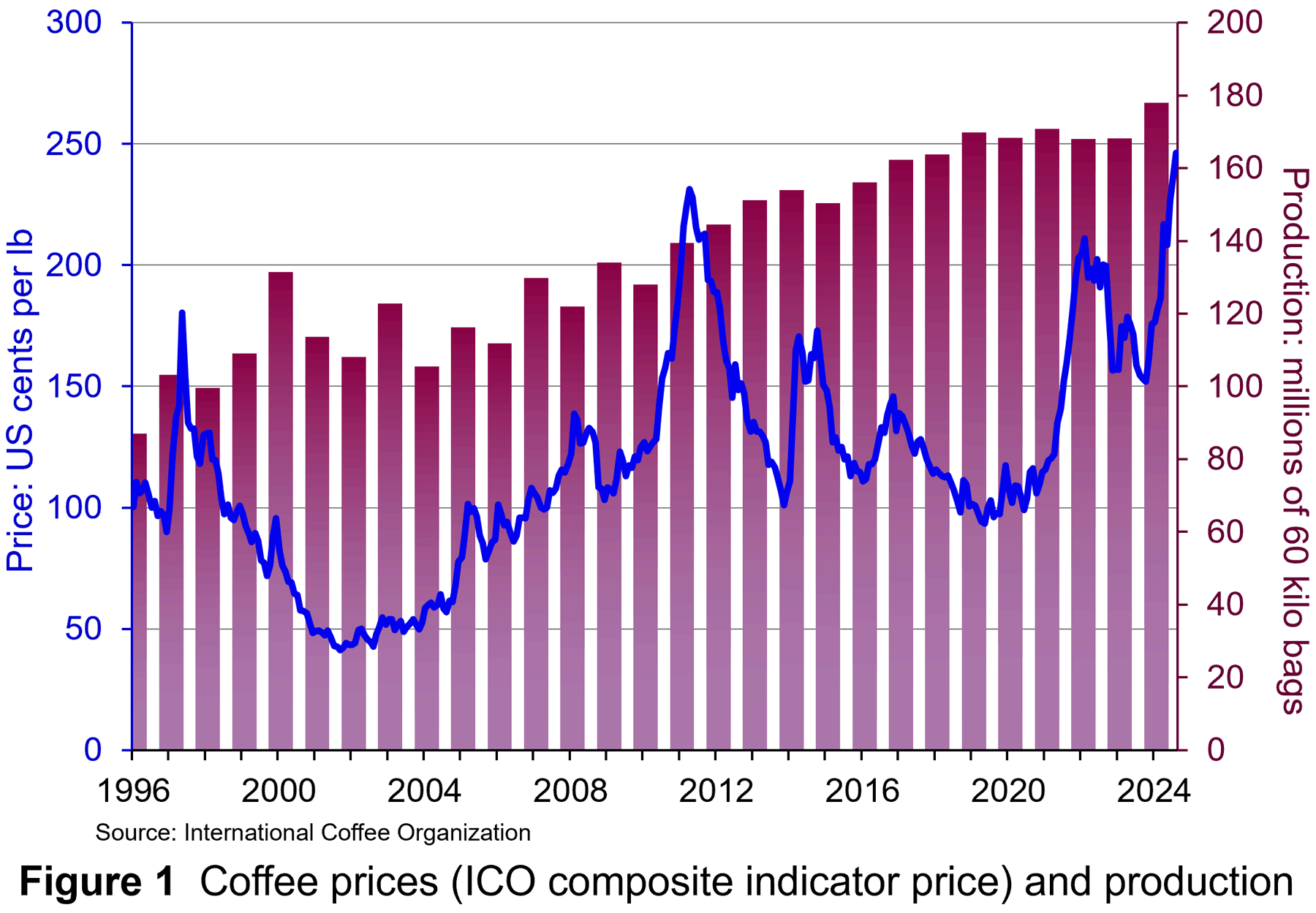 Coffee prices are extremely volatile – more so than production, which does, nevertheless, fluctuate with the harvest. Figure 1 shows global coffee production and prices since 1996. The price is the International Coffee Organization’s composite indicator price (I-CIP) in US cents per pound (lb). It is a weighted average of four prices: Colombian milds (Arabica), Other milds (Arabica), Brazilian naturals (mainly Arabica) and Robusta. Production is measured in 60 kilo bags.
Coffee prices are extremely volatile – more so than production, which does, nevertheless, fluctuate with the harvest. Figure 1 shows global coffee production and prices since 1996. The price is the International Coffee Organization’s composite indicator price (I-CIP) in US cents per pound (lb). It is a weighted average of four prices: Colombian milds (Arabica), Other milds (Arabica), Brazilian naturals (mainly Arabica) and Robusta. Production is measured in 60 kilo bags.
Case Study 2.3 on the student website for Economics 11th edition, looks at the various events that caused the fluctuations in prices and supply illustrated in Figure 1 (click here for a PowerPoint). In this blog we focus on recent events.
Why are coffee prices rising?
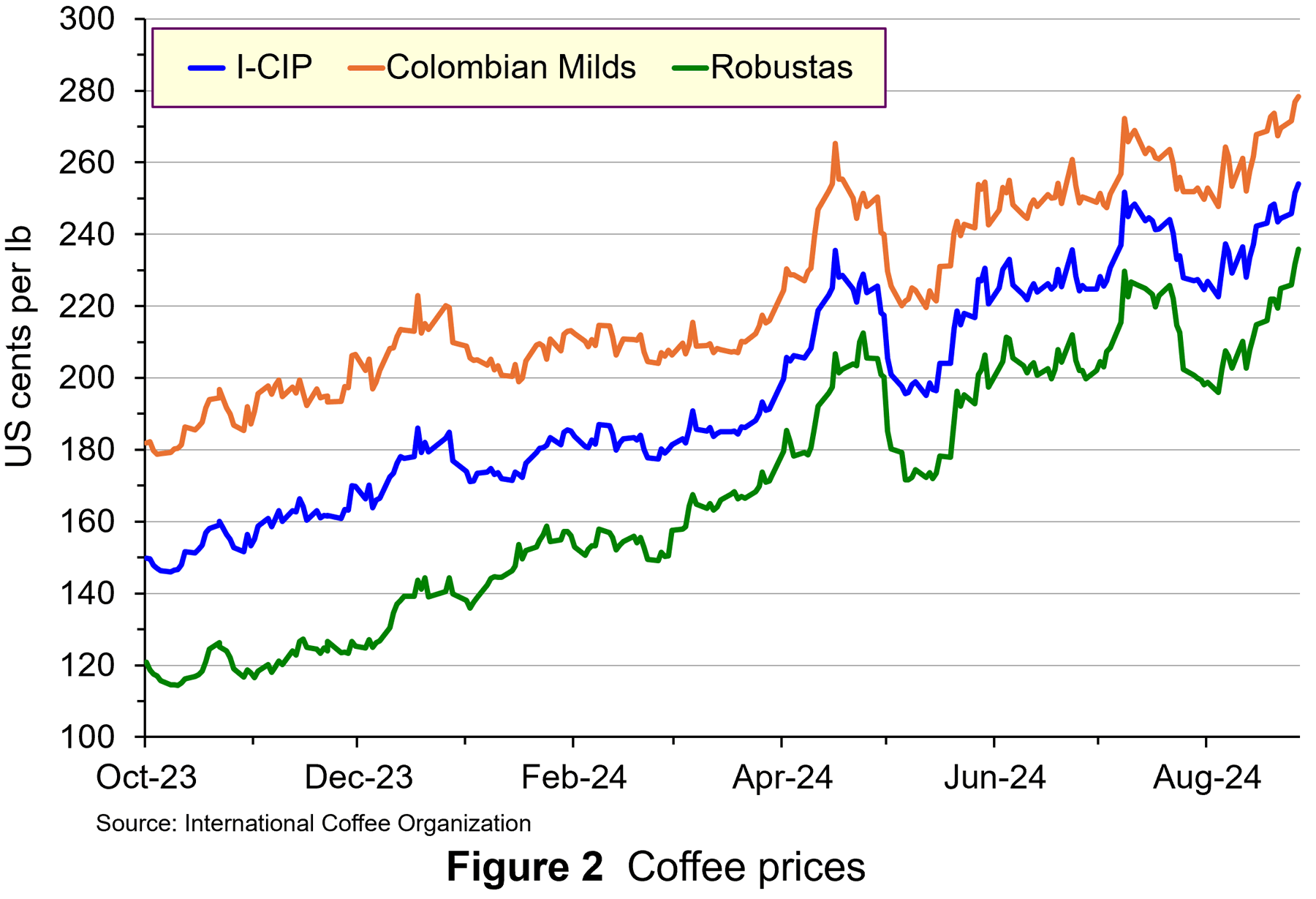 In early October 2023, the ICO composite indicator price (I-CIP), was $1.46 per lb. By 28 August, it had reached $2.54 – a rise of 74%. Colombian milds (high-quality Arabica) had risen from $1.79 per lb to $2.78 – a rise of 55%. Robusta coffee is normally cheaper than Arabica. It is mainly used in instant coffee and for espressos. As the price of Arabica rose, so there was some substitution, with Robusta coffees being added to blends. But as this process took place, so the gap between the Arabica and Robusta prices narrowed. Robusta prices rose from $1.14 in early October 2023 to £2.36 in late August – a rise of 107%. These prices are illustrated in Figure 2 (click here for a PowerPoint).
In early October 2023, the ICO composite indicator price (I-CIP), was $1.46 per lb. By 28 August, it had reached $2.54 – a rise of 74%. Colombian milds (high-quality Arabica) had risen from $1.79 per lb to $2.78 – a rise of 55%. Robusta coffee is normally cheaper than Arabica. It is mainly used in instant coffee and for espressos. As the price of Arabica rose, so there was some substitution, with Robusta coffees being added to blends. But as this process took place, so the gap between the Arabica and Robusta prices narrowed. Robusta prices rose from $1.14 in early October 2023 to £2.36 in late August – a rise of 107%. These prices are illustrated in Figure 2 (click here for a PowerPoint).
This dramatic rise in prices is the result of a number of factors.
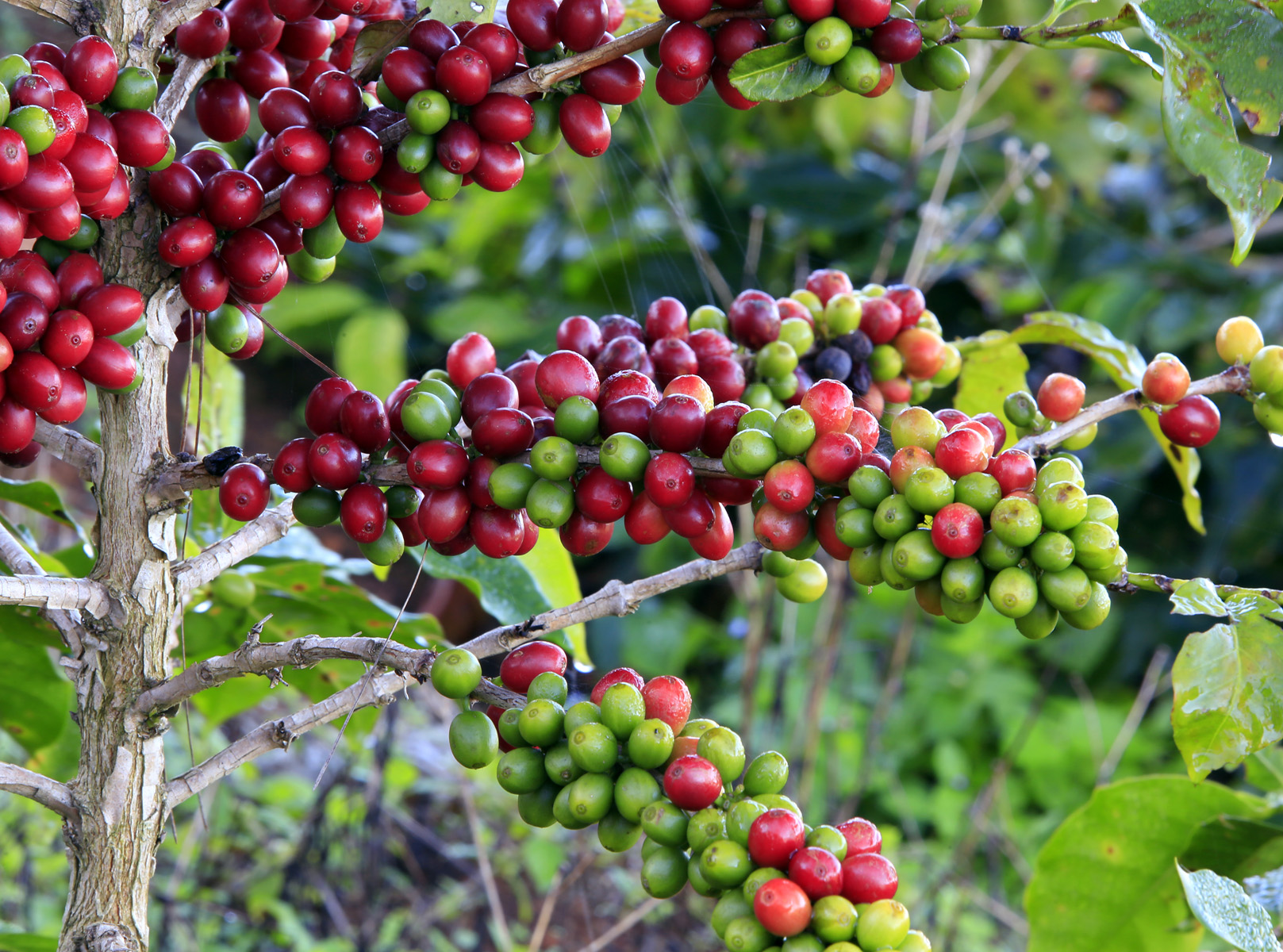 Supply-side factors. The first is poor harvests, which will affect future supply. Frosts in Brazil have affected Arabica production. Also, droughts – partly the result of climate change – have affected harvests in major Robusta-producing countries, such as Vietnam and Indonesia. With the extra demand from the substitution for Arabica, this has pushed up Robusta prices as shown in Figure 2. Another supply-side issue concerns the increasingly vulnerability of coffee crops to diseases, such as coffee rust, and pests. Both reduce yields and quality.
Supply-side factors. The first is poor harvests, which will affect future supply. Frosts in Brazil have affected Arabica production. Also, droughts – partly the result of climate change – have affected harvests in major Robusta-producing countries, such as Vietnam and Indonesia. With the extra demand from the substitution for Arabica, this has pushed up Robusta prices as shown in Figure 2. Another supply-side issue concerns the increasingly vulnerability of coffee crops to diseases, such as coffee rust, and pests. Both reduce yields and quality.
As prices have risen, so this has led to speculative buying of coffee futures by hedge funds and coffee companies. This has driven up futures prices, which will then have a knock-on effect on spot (current) prices as roasters attempt to build coffee stocks to beat the higher prices.
There have also been supply-chain problems. Attacks on shipping by Houthi rebels in the Red Sea have forced ships to take the longer route around the Cape of Good Hope. Again, this has particularly affected the supply of Robusta, largely grown in Asia and East Africa.
New EU regulation banning the import of coffee grown in areas of cleared rainforest will further reduce supply when it comes into force in 2025, or at least divert it away from the EU – a major coffee-consuming region.
 Demand-side factors. On the demand side, the rise of the coffee culture and a switch in demand from tea to coffee has led to a steady growth in demand. Growth in the coffee culture has been particularly high in Asian markets as rapid urbanistion, a growing middle class and changing lifestyles drive greater coffee consumption and greater use of coffee shops. This has more than offset a slight decline in coffee shop sales in the USA. In the UK, the number of coffee shops has risen steadily. In 2023, there were 3000 cafés, coffee chains and other venues serving coffee, of which 9885 were branded coffee shop outlets, such as Costa, Caffè Nero and Starbucks. Sales in such coffee chains rose by 11.9% in 2023. Similar patterns can be observed in other countries, all helping to drive a rise in demand.
Demand-side factors. On the demand side, the rise of the coffee culture and a switch in demand from tea to coffee has led to a steady growth in demand. Growth in the coffee culture has been particularly high in Asian markets as rapid urbanistion, a growing middle class and changing lifestyles drive greater coffee consumption and greater use of coffee shops. This has more than offset a slight decline in coffee shop sales in the USA. In the UK, the number of coffee shops has risen steadily. In 2023, there were 3000 cafés, coffee chains and other venues serving coffee, of which 9885 were branded coffee shop outlets, such as Costa, Caffè Nero and Starbucks. Sales in such coffee chains rose by 11.9% in 2023. Similar patterns can be observed in other countries, all helping to drive a rise in demand.
But although demand for coffee in coffee shops is growing, the rise in the price of coffee beans should have only a modest effect on the price of a cup of coffee. The cost of coffee beans purchased by a coffee shop accounts for only around 10% of the price of a cup. To take account of the costs to the supplier (roasting, distribution costs, overheads, etc), this price paid by the coffee shop/chain is some 5 times the cost of unroasted coffee beans on international markets. In other words, the international price of coffee beans accounts for only around 2% of the cost of a cup of coffee in a coffee shop.
Higher coffee-shop prices are thus mainly the result of other factors. These include roasting and other supplier costs, rising wages, rents, business rates, other ingredients such as milk and sugar, coffee machines, takeaway cups, heating, lighting, repairs and maintenance and profit. The high inflation over the past two years, with several of these costs being particularly affected, has been the major driver of price increases in coffee shops.
The future
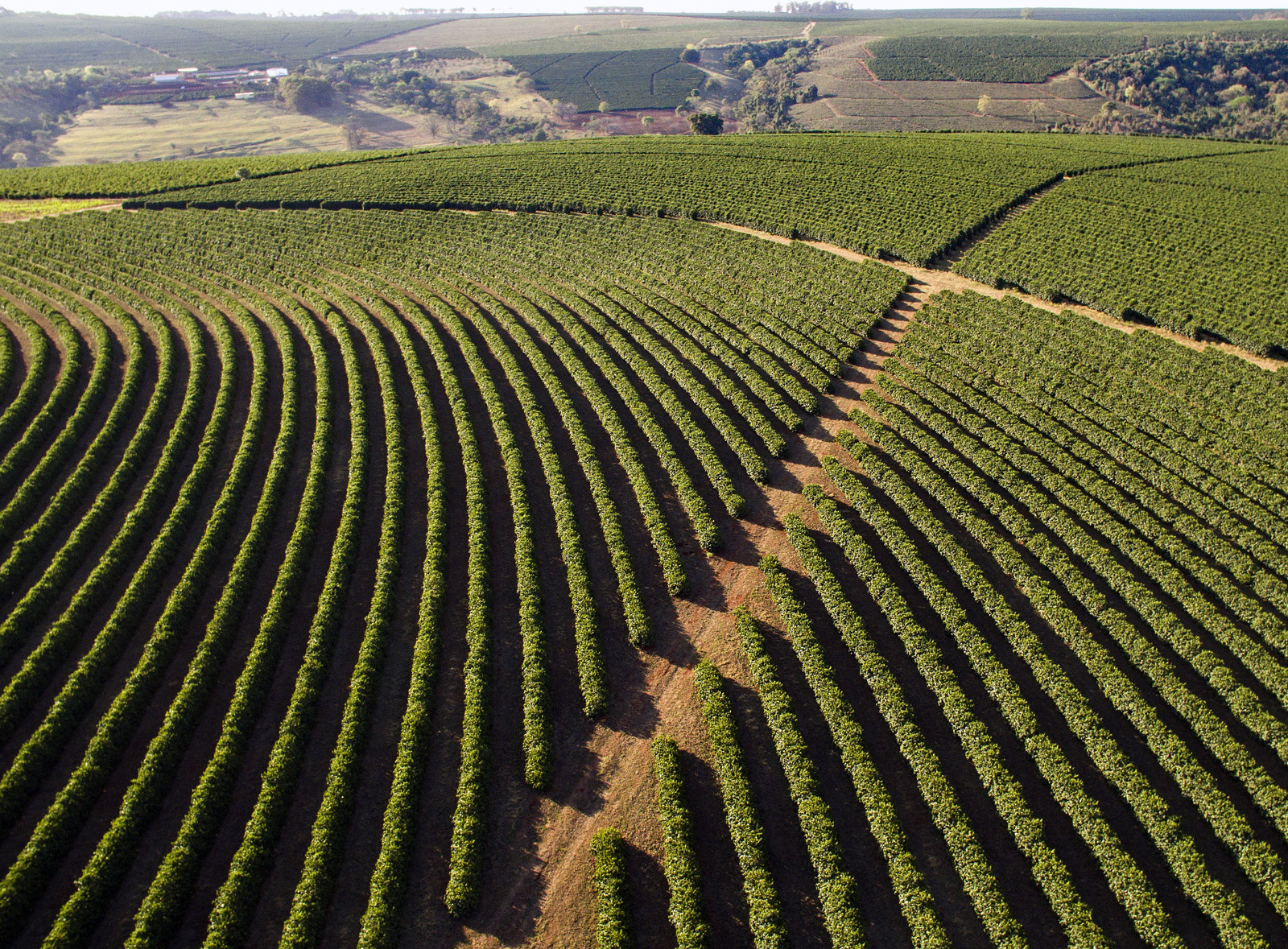 The rise in demand and prices over the years has led to an increase in supply as more coffee bushes are planted. As Figure 1 shows, world supply increased from 87 million in 1995/6 to 178 million 60 kilo bags in 2023/4 – a rise of 105%. The current high prices may stimulate farmers to plant more. But as it can take four years for coffee plants to reach maturity, it may take time for supply to respond. Later on, a glut might even develop! This would be a case of the famous cobweb model (see Case Study 3.13 on the Essentials of Economics 9th edition student website).
The rise in demand and prices over the years has led to an increase in supply as more coffee bushes are planted. As Figure 1 shows, world supply increased from 87 million in 1995/6 to 178 million 60 kilo bags in 2023/4 – a rise of 105%. The current high prices may stimulate farmers to plant more. But as it can take four years for coffee plants to reach maturity, it may take time for supply to respond. Later on, a glut might even develop! This would be a case of the famous cobweb model (see Case Study 3.13 on the Essentials of Economics 9th edition student website).
Nevertheless, climate change is making coffee production more vulnerable and demand is likely to continue to outstrip supply. Much of the land currently used to produce Arabica will no longer be suitable in a couple of decades. New strains of bean may be developed that are more hardy, such as variants of the more robust Robusta beans. Whether this will allow supply to keep up with demand remains to be seen.
Articles
- Even more expensive coffee prices are brewing, but there are some good reasons why
The Conversation, Jonathan Morris (31/7/24)
- Coffee is becoming a luxury, and there’s no escaping it
AccuWeather, Erika Tulfo (1/8/24)
- Coffee prices will rise even higher, says Giuseppe Lavazza
The Guardian, Jonathan Yeboah (9/7/24)
- Coffee prices set to rise even higher, warns Italian roaster Lavazza
Financial Times, Susannah Savage (9/7/24)
- Soaring coffee prices force roasters to add lower-cost beans to blends
Financial Times, Susannah Savage (24/8/24)
- Soaring coffee prices foretell a financial grind
Reuters, Robert Cyran (31/8/24)
- Projected Coffee Price Increase Due to Supply Shortages and Rising Demand
ISN Magazine: International Supermarket News (14/8/24)
- Coffee Market Report
International Coffee Organization (July 2024)
- Strengthening global robusta production: an update
World Coffee Research: News (4/12/23)
- Houthi rebels and the EU make your coffee more expensive
Politico, Carlo Martuscelli (13/8/24)
Data
Questions
- Use a demand and supply diagram to compare the coffee market in August 2024 with that in October 2023.
- How is the price elasticity of demand relevant to determining the size of price fluctuations in response to fluctuations in the supply of coffee? Demonstrate this with a supply and demand diagram.
- How has speculation affected coffee prices?
- What are ‘coffee futures’? How do futures prices relate to spot prices?
- What is likely to happen to coffee prices in the coming months? Explain.
- Why have Robusta prices risen by a larger percentage than Arabica prices? Is this trend likely to continue?
- Look at the price of Colombian Arabica coffee in your local supermarket. Work out what the price would be per lb and convert it to US dollars. How does this retail price compare with the current international price for Colombian milds and what accounts for the difference? (For current information on Colombian milds, see the third data link above.)
- Distinguish between the fixed and variable costs of an independent coffee shop. How should the coffee shop set its prices in relation to these costs and to demand?
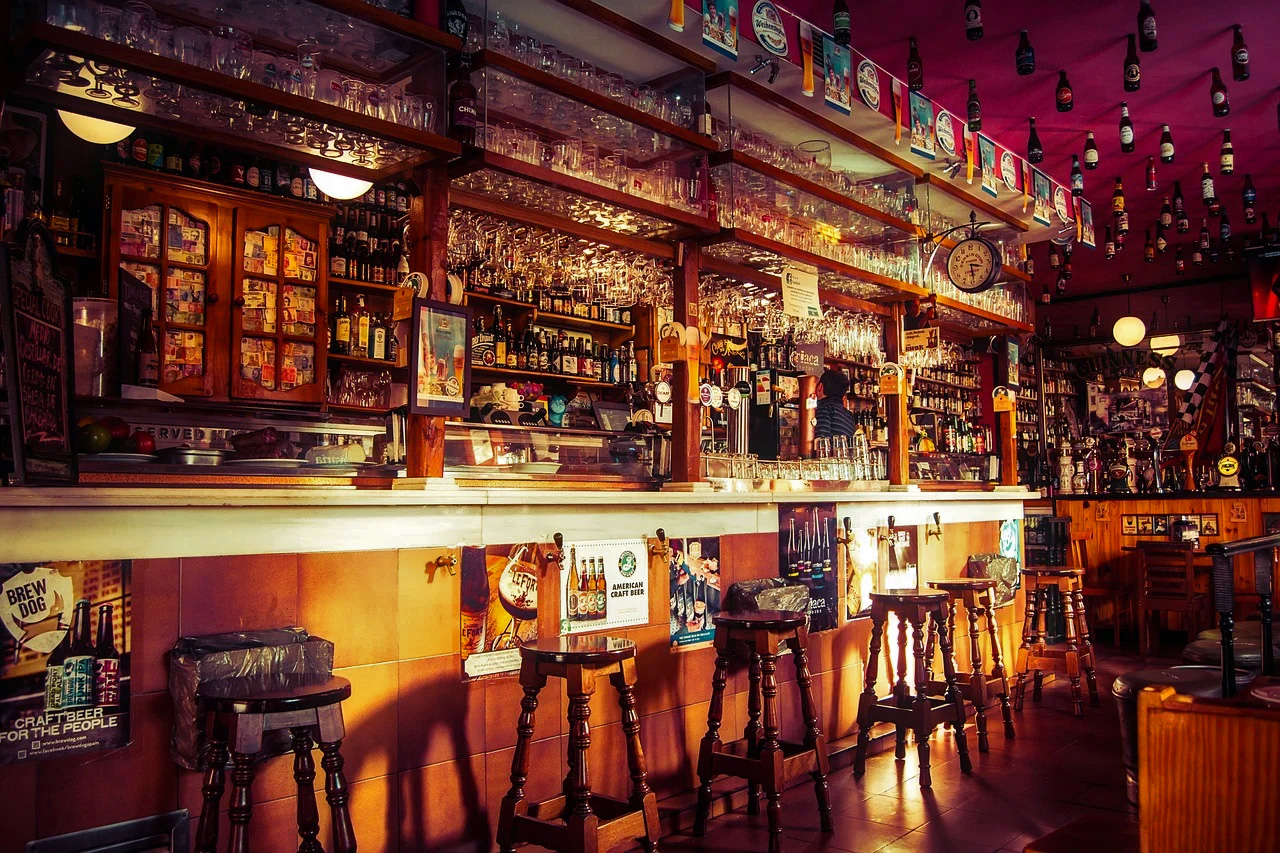 Some firms in the high-Covid, tier 3 areas in England are being forced to shut by the government. These include pubs and bars not serving substantial meals. Similarly, pubs in the central belt of Scotland must close. But how should such businesses and their employees be supported?
Some firms in the high-Covid, tier 3 areas in England are being forced to shut by the government. These include pubs and bars not serving substantial meals. Similarly, pubs in the central belt of Scotland must close. But how should such businesses and their employees be supported?
As we saw in the blog, The new UK Job Support Scheme: how much will it slow the rise in unemployment?, the government will support such businesses by paying two-thirds of each employees’ salary (up to a maximum of £2100 a month) and will give cash grants to the businesses of up to £3000 per month.
This support has been criticised by local leaders, such as those in Greater Manchester, as being insufficient. Workers, they argue, will struggle to pay their bills and the support for firms will be too little to prevent many closing for good. What is more, many firms and their employees in the supply chain, such as breweries, will get no support. Greater Manchester resisted being put into tier 3 unless the level of support was increased. However, tier 3 status was imposed on the authority on 20 October despite lack of agreement with local politicians on the level of support.
Jim O’Neill, Vice Chair of the Northern Powerhouse partnership, has argued that the simplest way of supporting firms forced to close is to guarantee their revenue. He stated that:
The government would be sensible to guarantee the revenues of businesses it is forcing to shut. It is easier, fairer and probably less costly in the long run – and a proper test of the government’s confidence that in the New Year two of the seven vaccines the UK has signed up to will work.
This would certainly help firms to survive and allow them to pay their employees. But would guaranteeing revenues mean that such firms would see an increase in profits? The questions below explore this issue.
Articles
Questions
- Identify the fixed and variable costs for a pub (not owned by a brewery).
- If a pub closed down but the wages of workers continued to be paid in full, what cost savings would be made?
- If a pub closed down but was given a monthly grant by the government equal to its previous monthly total revenue but had to pay the wages of it workers in full, what would happen to its profits?
- On 19 October, the Welsh government introduced a two-week lockdown for Wales. Under these restrictions, all non-essential retail, leisure, hospitality and tourism businesses had to close. Find out what support was on offer for such firms and their workforce and compare it to other parts of the UK.
- What type of support for leisure and hospitality businesses forced by the government to close would, in your opinion, be optimal? Justify your answer.
- Is there any moral hazard from the government providing support for businesses made unprofitable by the Covid-19 crisis? Explain.
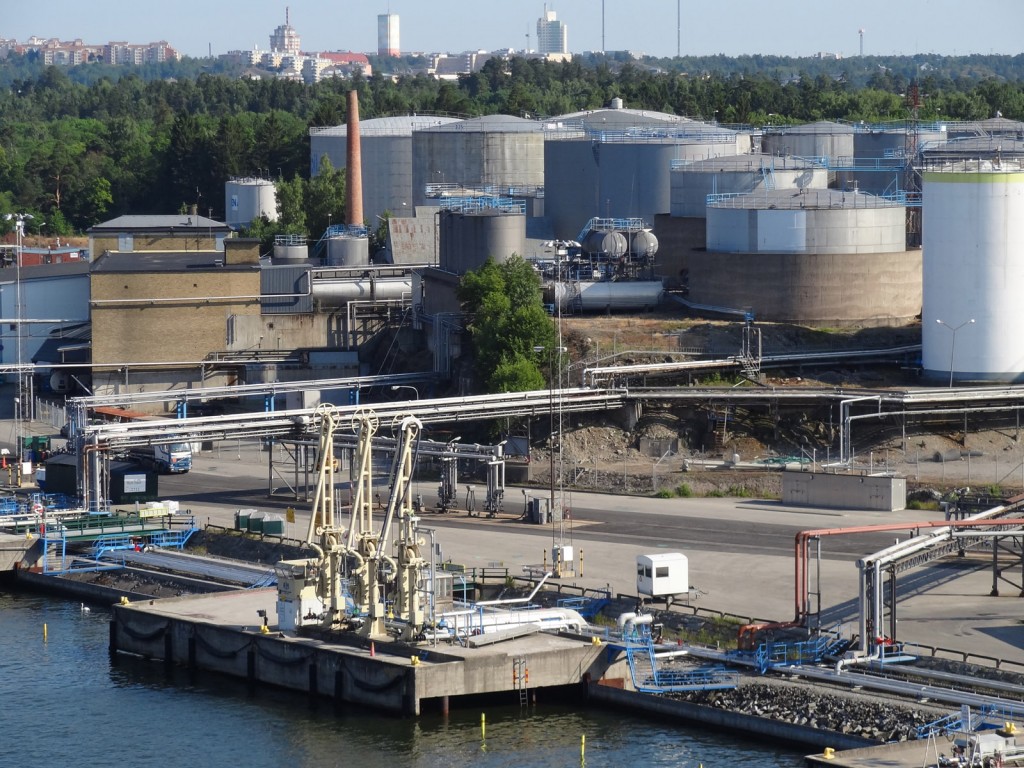 The demand for oil is growing and yet the price of oil, at around $46 per barrel over the past few weeks, remains at less than half that of the period from 2011 to mid 2014. The reason is that supply has been much larger than demand. The result has been a large production surplus and a growth in oil stocks. Supply did fall somewhat in October, which reduced the surplus in 2015 Q3 below than of the record level in Q2 – but the surplus was still the second highest on record.
The demand for oil is growing and yet the price of oil, at around $46 per barrel over the past few weeks, remains at less than half that of the period from 2011 to mid 2014. The reason is that supply has been much larger than demand. The result has been a large production surplus and a growth in oil stocks. Supply did fall somewhat in October, which reduced the surplus in 2015 Q3 below than of the record level in Q2 – but the surplus was still the second highest on record.
What is more, the modest growth in demand is forecast to slow in 2016. Supply, however, is expected to decrease through the first three quarters of 2016, before rising again at the end of 2016. The result will be a modest rise in price into 2016, to around $56 per barrel, compared with an average of just over $54 per barrel so far for 2015 (click here for a PowerPoint of the chart below).
 But why does supply remain so high, given such low prices? As we saw in the post The oil industry and low oil prices, it is partly the result of increases in supply from large-scale investment in new sources of oil over the past few years, such as the fracking of shale deposits, and partly the increased output by OPEC designed to keep prices low and make new investment in shale oil unprofitable.
But why does supply remain so high, given such low prices? As we saw in the post The oil industry and low oil prices, it is partly the result of increases in supply from large-scale investment in new sources of oil over the past few years, such as the fracking of shale deposits, and partly the increased output by OPEC designed to keep prices low and make new investment in shale oil unprofitable.
So why then doesn’t supply drop off rapidly? As we saw in the post, A crude indicator of the economy (Part 2), even though shale oil producers in the USA need a price of around $70 or more to make investment in new sources profitable, the marginal cost of extracting oil from existing sources is only around $10 to £20 per barrel. 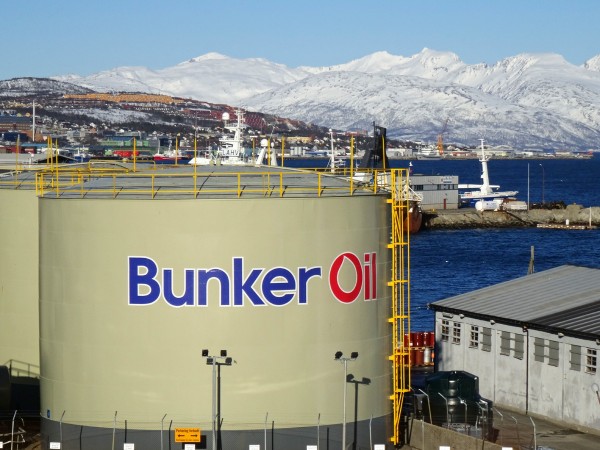 This means that shale oil production will continue until the end of the life of the wells. Given that wells typically have a life of at least three years, it could take some time for the low prices to have a significant effect on supply. According to the US Energy Information Administration’s forecasts, US crude oil production will drop next year by only just over 5%, from an average of 9.3 million barrels per day in 2015 to 8.8 million barrels per day in 2016.
This means that shale oil production will continue until the end of the life of the wells. Given that wells typically have a life of at least three years, it could take some time for the low prices to have a significant effect on supply. According to the US Energy Information Administration’s forecasts, US crude oil production will drop next year by only just over 5%, from an average of 9.3 million barrels per day in 2015 to 8.8 million barrels per day in 2016.
In the meantime, we can expect low oil prices to continue for some time. Whilst this is bad news for oil exporters, it is good news for oil importing countries, as the lower costs will help aid recovery.
Webcasts
 IEA says oil glut could worsen through 2016 Euronews (13/11/15)
IEA says oil glut could worsen through 2016 Euronews (13/11/15)
 IEA Says Record 3 Billion-Barrel Oil Stocks May Deepen Rout BloombergBusiness, Grant Smith (13/11/15)
IEA Says Record 3 Billion-Barrel Oil Stocks May Deepen Rout BloombergBusiness, Grant Smith (13/11/15)
Articles
IEA Offers No Hope For An Oil-Price Recovery Forbes, Art Berman (13/11/15)
Oil glut to swamp demand until 2020 Financial Times, Anjli Raval (10/11/15)
Record oil glut stands at 3bn barrels BBC News (13/11/15)
Global oil glut highest in a decade as inventories soar The Telegraph, Mehreen Khan (12/11/15)
The Oil Glut Was Created In Q1 2015; Q3 OECD Inventory Movements Are Actually Quite Normal Seeking Alpha (13/11/15)
Record oil glut stands at 3 billion barrels Arab News (14/11/15)
OPEC Update 2015: No End To Oil Glut, Low Prices, As Members Prepare For Tense Meeting International Business Times, Jess McHugh (12/11/15)
Surviving The Oil Glut Investing.com, Phil Flynn (11/11/15)
Reports and data
Oil Market Report International Energy Agency (IEA) (13/11/15)
Short-term Energy Outlook US Energy Information Administration (EIA) (10/11/15)
Brent Crude Prices US Energy Information Administration (EIA)
Questions
- Using demand and supply diagrams, demonstrate (a) what has been happening to oil prices in 2015 and (b) what is likely to happen to them in 2016.
- How are the price elasticities of demand and supply relevant in explaining the magnitude of oil price movements?
- What are oil prices likely to be in five years’ time?
- Using aggregate demand and supply analysis, demonstrate the effect of lower oil prices on a national economy.
- Why might the downward effect on inflation from lower oil prices act as a stimulus to the economy? Is this consistent with deflation being seen as requiring a stimulus from central banks, such as lower interest rates or quantitative easing?
- Do you agree with the statement that “Saudi Arabia is acting directly against the interests of half the cartel and is running OPEC over a cliff”?
- If the oil price is around $70 per barrel in a couple of years’ time, would it be worth oil companies investing in shale oil wells at that point? Explain why or why not.
- Distinguish between short-run and long-run shut down points. Why is the short-run shut down price likely to be lower than the long-run one?
 ‘Farm-gate’ milk prices (the price paid to farmers) have been rising in the UK. In July they reached a record high of 31.4p per litre (ppl). This was 5.1ppl higher than in July 2012. There were further price rises this month (October). Sainsbury’s increased the price it pays farmers by nearly 2ppl to 34.15ppl and Arla Foods by 1.5ppl to 33.13ppl. Muller Wiseman is set to raise the price it pays to 32.5p per litre.
‘Farm-gate’ milk prices (the price paid to farmers) have been rising in the UK. In July they reached a record high of 31.4p per litre (ppl). This was 5.1ppl higher than in July 2012. There were further price rises this month (October). Sainsbury’s increased the price it pays farmers by nearly 2ppl to 34.15ppl and Arla Foods by 1.5ppl to 33.13ppl. Muller Wiseman is set to raise the price it pays to 32.5p per litre.
And yet many farmers are struggling to make a profit from milk production, claiming that their costs have risen faster than the prices they receive. Feed costs, for example, have risen by 2.12ppl. On average, farmers would need over 38p per litre just to cover their average variable costs. What is more, exceptional weather has reduced yields per cow by some 7%.
Meanwhile, in the USA, supply has risen by some 1.3% compared with a year ago. But despite this, the prices of dairy products are rising, thanks to strong demand. Cheese and butter prices, in particular, are rising rapidly, partly because of high demand from overseas. Demand for imported dairy products is particularly high in China, where supply has fallen by some 6% in the past couple of months.
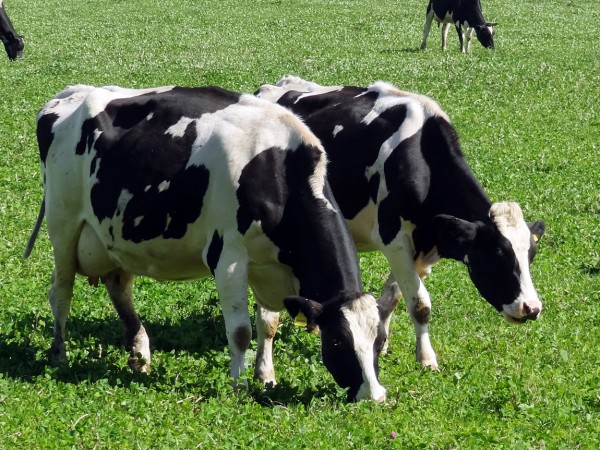 The problem for dairy farmers in the UK is partly one of the power balance in the industry. Farmers have little or no market power. Supermarkets, however, have considerable market power. As large oligopsonistic buyers, they can put downward pressure on the prices paid to their suppliers. These are mainly large processing firms, such as Robert Wiseman Dairies, Arla Foods and Dairy Crest. They, in turn, can use their market power to keep down the price they pay to farmers.
The problem for dairy farmers in the UK is partly one of the power balance in the industry. Farmers have little or no market power. Supermarkets, however, have considerable market power. As large oligopsonistic buyers, they can put downward pressure on the prices paid to their suppliers. These are mainly large processing firms, such as Robert Wiseman Dairies, Arla Foods and Dairy Crest. They, in turn, can use their market power to keep down the price they pay to farmers.
Articles
Dairy farmers renew protests over milk prices Farmers Weekly, Philip Case (5/9/13)
Dairy farmers ‘lost more than 1p/litre last year’ Farmers Weekly, Philip Case (2/10/13)
South West farming businesses and producers still making a loss on milk South West Business (3/10/13)
Q&A: Milk prices row and how the system works BBC News (23/7/12) (note date of this)
Positive Dairy Trend: Rising Milk Production and Strong Demand The Farmer’s Exchange, Lee Mielke (27/9/13)
Chinese supply crisis to delay dairy price adjustment Rabobank (25/9/13)
China milk ‘crisis’ fuels world dairy price rise Agrimoney (1/10/13)
Data
UK milk prices and composition of milk ONS
Combined IFCN world milk price indicator IFCN
Questions
- Give some examples of (a) variable costs and (b) fixed costs in milk production.
- Why may farmers continue in dairy production, at least for a time, even if they are not covering their average variable costs?
- What factors determine (a) the price of milk paid to farmers; (b) the retail price in supermarkets?
- Explain how dairy futures markets work.
- Could the milk processors use their market power in the interests of farmers? Is it in the interests of milk processors to do so?
- Why is there a Chinese “dairy supply crisis”? What is its impact on the rest of the world? What is the relevance of the price elasticity of demand for dairy products in China to this impact?
 The pricing model for low-cost airline seats seems simple. As the seats get booked, so the price rises. Thus the later you leave it to book, the more expensive it will be. But, in fact, it’s not as simple as this. Seat prices sometimes come down as the take-off date approaches. So what is the pricing model?
The pricing model for low-cost airline seats seems simple. As the seats get booked, so the price rises. Thus the later you leave it to book, the more expensive it will be. But, in fact, it’s not as simple as this. Seat prices sometimes come down as the take-off date approaches. So what is the pricing model?
The general principle of raising prices as the plane fills up still applies. This enables the airline to discriminate between passengers. Holidaymakers and those with flexibility about when, and possibly where, to travel tend to have a relatively high price elasticity of demand. People who wish to travel at the last minute, such as businesspeople and those facing a family emergency, tend to have a much lower price elasticity of demand and would be prepared to pay a higher, possibly much higher, price.
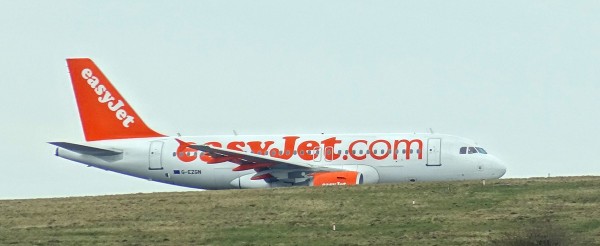 With relatively high fixed costs for each flight, low-cost airlines need to fill, or virtually fill, their planes if they are to make a profit. And it’s not just about the direct revenue from ticket sales. Low-cost carriers also rely on the revenue from selling extras, such as on-board refreshments, hold luggage, hotels, car hire and travel insurance. With variable costs being tiny, the pricing model is about maximising revenue for each flight. So the fuller the plane, the better it is for the airline.
With relatively high fixed costs for each flight, low-cost airlines need to fill, or virtually fill, their planes if they are to make a profit. And it’s not just about the direct revenue from ticket sales. Low-cost carriers also rely on the revenue from selling extras, such as on-board refreshments, hold luggage, hotels, car hire and travel insurance. With variable costs being tiny, the pricing model is about maximising revenue for each flight. So the fuller the plane, the better it is for the airline.
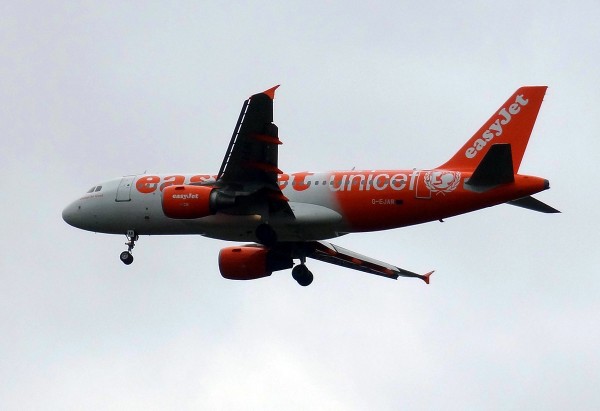 The airlines are very experienced in estimating demand over the period from a flight coming on sale and the departure date. If they get it right, then prices will indeed rise as take-off approaches. But sometimes they get it wrong. If, as time passes, a given flight is filling up too slowly, then it makes sense to be more flexible on prices, cutting them if necessary. Pricing may be easy in principle; but not always easy in practice!
The airlines are very experienced in estimating demand over the period from a flight coming on sale and the departure date. If they get it right, then prices will indeed rise as take-off approaches. But sometimes they get it wrong. If, as time passes, a given flight is filling up too slowly, then it makes sense to be more flexible on prices, cutting them if necessary. Pricing may be easy in principle; but not always easy in practice!
Article
Low-cost air fares: How ticket prices fall and rise BBC News, Erica Gornall (21/6/13)
Papers
Pricing strategies of low cost airlines Air Transport Group, Cranfield University, Keith J Mason (2002)
Pricing strategies of low-cost airlines: The Ryanair case study Journal of Air Transport Management, 15, Paolo Malighetti, Stefano Paleari and Renato Redondi (2009)
Questions
- Does a low-cost airline always charge lower prices than a traditional scheduled airline? If not, why not?
- Identify the various reasons why holidaymakers may have a relatively elastic demand for a particular flight?
- Explain the system of ‘buckets’ of seats?
- Are low-cost airlines engaging in price discrimination and, if so, which type?
- Are there any variable costs of operating a particular flight (assuming that the flight does actually take place)?
- If demand for a flight becomes less elastic as the date of departure gets nearer, why might a budget airline choose to lower the price, at least for a few days?
- Why can Ryanair operate with lower costs than easyJet?
- Would it be in low-cost airlines’ interests to charge more (a) to overweight people; (b) for using the toilet?
 Coffee prices have been soaring in recent months. This applies to the prices of both coffee beans on international markets, coffee in supermarkets and coffee in coffee shops. In this blog we examine the causes and what is likely to happen over the coming months.
Coffee prices have been soaring in recent months. This applies to the prices of both coffee beans on international markets, coffee in supermarkets and coffee in coffee shops. In this blog we examine the causes and what is likely to happen over the coming months. Coffee prices are extremely volatile – more so than production, which does, nevertheless, fluctuate with the harvest. Figure 1 shows global coffee production and prices since 1996. The price is the International Coffee Organization’s composite indicator price (I-CIP) in US cents per pound (lb). It is a weighted average of four prices: Colombian milds (Arabica), Other milds (Arabica), Brazilian naturals (mainly Arabica) and Robusta. Production is measured in 60 kilo bags.
Coffee prices are extremely volatile – more so than production, which does, nevertheless, fluctuate with the harvest. Figure 1 shows global coffee production and prices since 1996. The price is the International Coffee Organization’s composite indicator price (I-CIP) in US cents per pound (lb). It is a weighted average of four prices: Colombian milds (Arabica), Other milds (Arabica), Brazilian naturals (mainly Arabica) and Robusta. Production is measured in 60 kilo bags.  In early October 2023, the ICO composite indicator price (I-CIP), was $1.46 per lb. By 28 August, it had reached $2.54 – a rise of 74%. Colombian milds (high-quality Arabica) had risen from $1.79 per lb to $2.78 – a rise of 55%. Robusta coffee is normally cheaper than Arabica. It is mainly used in instant coffee and for espressos. As the price of Arabica rose, so there was some substitution, with Robusta coffees being added to blends. But as this process took place, so the gap between the Arabica and Robusta prices narrowed. Robusta prices rose from $1.14 in early October 2023 to £2.36 in late August – a rise of 107%. These prices are illustrated in Figure 2 (click here for a PowerPoint).
In early October 2023, the ICO composite indicator price (I-CIP), was $1.46 per lb. By 28 August, it had reached $2.54 – a rise of 74%. Colombian milds (high-quality Arabica) had risen from $1.79 per lb to $2.78 – a rise of 55%. Robusta coffee is normally cheaper than Arabica. It is mainly used in instant coffee and for espressos. As the price of Arabica rose, so there was some substitution, with Robusta coffees being added to blends. But as this process took place, so the gap between the Arabica and Robusta prices narrowed. Robusta prices rose from $1.14 in early October 2023 to £2.36 in late August – a rise of 107%. These prices are illustrated in Figure 2 (click here for a PowerPoint). Supply-side factors. The first is poor harvests, which will affect future supply. Frosts in Brazil have affected Arabica production. Also, droughts – partly the result of climate change – have affected harvests in major Robusta-producing countries, such as Vietnam and Indonesia. With the extra demand from the substitution for Arabica, this has pushed up Robusta prices as shown in Figure 2. Another supply-side issue concerns the increasingly vulnerability of coffee crops to diseases, such as coffee rust, and pests. Both reduce yields and quality.
Supply-side factors. The first is poor harvests, which will affect future supply. Frosts in Brazil have affected Arabica production. Also, droughts – partly the result of climate change – have affected harvests in major Robusta-producing countries, such as Vietnam and Indonesia. With the extra demand from the substitution for Arabica, this has pushed up Robusta prices as shown in Figure 2. Another supply-side issue concerns the increasingly vulnerability of coffee crops to diseases, such as coffee rust, and pests. Both reduce yields and quality. Demand-side factors. On the demand side, the rise of the coffee culture and a switch in demand from tea to coffee has led to a steady growth in demand. Growth in the coffee culture has been particularly high in Asian markets as rapid urbanistion, a growing middle class and changing lifestyles drive greater coffee consumption and greater use of coffee shops. This has more than offset a slight decline in coffee shop sales in the USA. In the UK, the number of coffee shops has risen steadily. In 2023, there were 3000 cafés, coffee chains and other venues serving coffee, of which 9885 were branded coffee shop outlets, such as Costa, Caffè Nero and Starbucks. Sales in such coffee chains rose by 11.9% in 2023. Similar patterns can be observed in other countries, all helping to drive a rise in demand.
Demand-side factors. On the demand side, the rise of the coffee culture and a switch in demand from tea to coffee has led to a steady growth in demand. Growth in the coffee culture has been particularly high in Asian markets as rapid urbanistion, a growing middle class and changing lifestyles drive greater coffee consumption and greater use of coffee shops. This has more than offset a slight decline in coffee shop sales in the USA. In the UK, the number of coffee shops has risen steadily. In 2023, there were 3000 cafés, coffee chains and other venues serving coffee, of which 9885 were branded coffee shop outlets, such as Costa, Caffè Nero and Starbucks. Sales in such coffee chains rose by 11.9% in 2023. Similar patterns can be observed in other countries, all helping to drive a rise in demand. The rise in demand and prices over the years has led to an increase in supply as more coffee bushes are planted. As Figure 1 shows, world supply increased from 87 million in 1995/6 to 178 million 60 kilo bags in 2023/4 – a rise of 105%. The current high prices may stimulate farmers to plant more. But as it can take four years for coffee plants to reach maturity, it may take time for supply to respond. Later on, a glut might even develop! This would be a case of the famous cobweb model (see Case Study 3.13 on the Essentials of Economics 9th edition student website).
The rise in demand and prices over the years has led to an increase in supply as more coffee bushes are planted. As Figure 1 shows, world supply increased from 87 million in 1995/6 to 178 million 60 kilo bags in 2023/4 – a rise of 105%. The current high prices may stimulate farmers to plant more. But as it can take four years for coffee plants to reach maturity, it may take time for supply to respond. Later on, a glut might even develop! This would be a case of the famous cobweb model (see Case Study 3.13 on the Essentials of Economics 9th edition student website). Some firms in the high-Covid, tier 3 areas in England are being
Some firms in the high-Covid, tier 3 areas in England are being 







